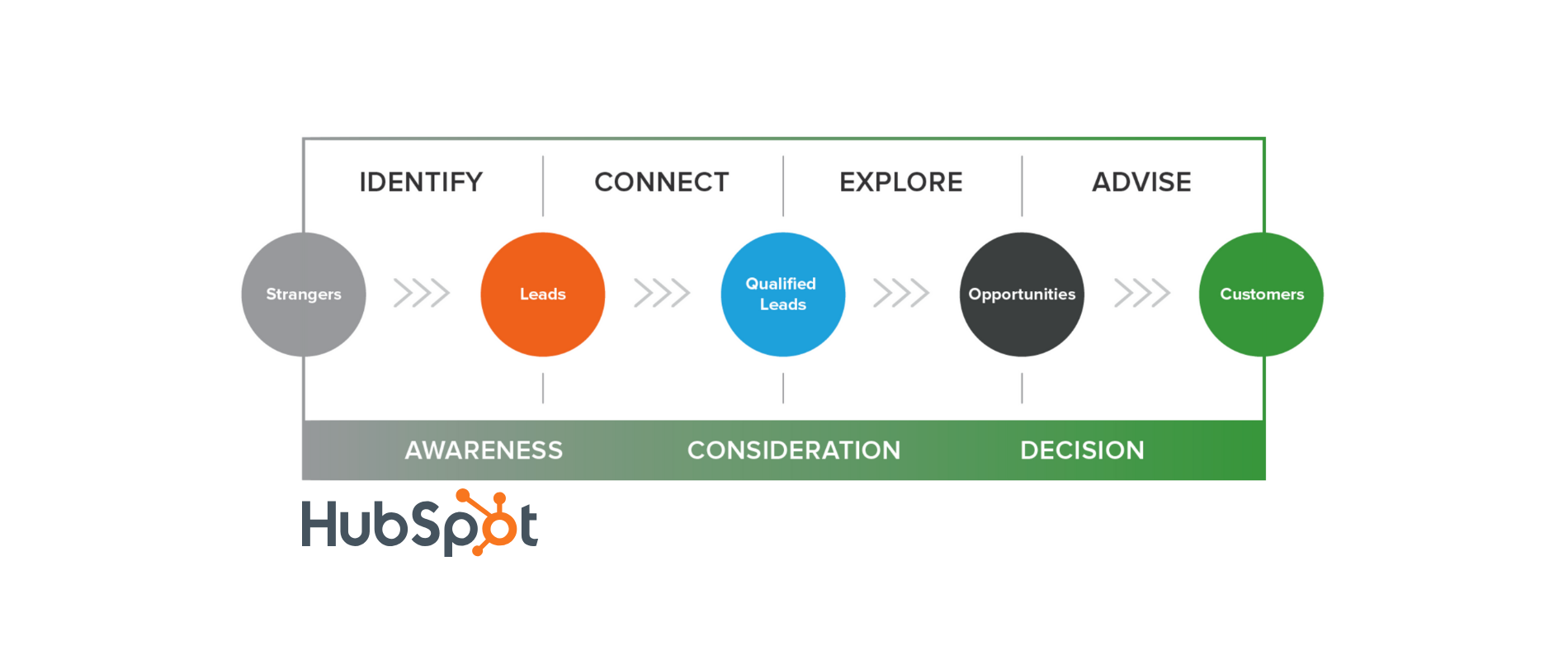
Get weekly
HubSpot updates
If you are a regular SpotDev blog reader, you’ll know that we huge advocates for a close working relationship between your sales and marketing teams. Not only does it mean that both teams are working towards the same, shared business goal, but when your inbound marketing strategy is aligned to your sales targets, your conversions increase too – allowing your Smarketing team to not only hit but smash their goals.
What is inbound marketing, and why is it related to your sales conversions?
Inbound marketing is a business methodology that attracts customers through the creation of valuable content and personalising their experience with your brand. At the core of inbound marketing, it is about forming connections with your customers to provide them with the solutions they are looking for and solving the problems they already have.
When your inbound marketing is right, you start to answer the questions your prospects are asking at each stage of their buyer’s journey. As a result, you create a more educated prospect to be passed to the sales team and reduces the number of unqualified leads that reach this point. In turn, your sales process speeds up, with less back and forth to individual leads because the bulk of their frequently asked questions have been answered. In fact, HubSpot found that 49.7% of companies using inbound marketing increased their sales within the first seven months, and 63.24% increased their sales within the first 12.
By building strong customer relationships through this methodology, you not only improve your initial sales conversion rates but also create more opportunities to upsell and renew contracts with these customers through continuing to provide valuable content throughout the lifetime of their custom with you.
MQL or SQL? That is the question.
If you are looking to improve your sales conversions, you need to know your numbers. For a Smarketing team to work smartly, we work with our clients to make sure they know their conversion rates from visitor to lead, lead to marketing qualified lead (MQL), MQL to sales qualified lead (SQL), SQL to opportunity and opportunity to close.
We do this so that we can put each stage of the sales process under the metaphorical microscope see how we can tweak each stage of the customer’s lifecycle to increase the sales made.
So, what’s the difference between an MQL, SQL, and opportunity I hear you ask?
An MQL is a lead that is engaged with your company and can become a customer if nurtured correctly. They will have met the criteria agreed with the marketing team that signifies they are a promising lead, such as their position within the company, the size of their business, or the industry they work in.
Depending on their buying signals, this lead will either be passed to the sales team to vet further into an SQL or nurtured by the marketing team until they take an action such as booking an appointment or hit a defined lead score.
An SQL is typically a lead that has been passed on to the sales team, and they have “accepted the lead”. This is usually done via a connect call with the prospect where the sales team will determine if they have a need for your service or solution and if they have the Budget, Authority, Need and Timelines (BANT) in place. At this point, if your sales team are satisfied, they can move start to work the SQL into an opportunity and your sales team can dedicate more time to one-to-one communication with them to convert them to customer.
By being able to break down your conversion rates through each stage of your lead’s lifecycle stage, you’ll be able to see what is and what isn’t working and where in your sales process you need to optimise further.
What can I do now to start improving my SaaS sales conversion rate?
If you want to improve your sales conversion rates, you need to start at the source. What is the quality of the leads that are being produced by marketing or the sales team’s lead generation activity?
If you are finding that many of your leads are not making their way through to an SQL or opportunity lifecycle stage, the likelihood is that you aren’t attracting the right leads in the first place. Go back to basics and review your buyer personas and the content you are creating for them and see what needs to be tweaked, optimised, or chucked completely to improve the quality of your leads.
If your content is right, but the numbers are just too small, then you’ll want to look at how you can push your content in front of the right audience. Consider using targeted social media advertising, search advertising, and SEO to get more eyes on your content. But before you drive more traffic, be sure you have the funnels in place to capture the leads in the first place. By creating content offers, tools and guides that website visitors would be willing to exchange their email address to gain access to, you can start to fill your pipeline with prospects that you know are looking for a solution like yours.
Once you manage to capture a new lead via your website, don’t let this hard work go to waste. By using automated email sequences, you can continue to engage with your prospects in a scalable way, that allows them to be educated further and nurtured through to the all-important MQLs and SQLs.
By understanding the link from your marketing efforts all the way through to your customers, you’ll be in a much better position to see where in your funnel needs the most work and start to see your sales conversions increase and systematically improve, bringing you closer to reaching your business goals.
Download the SaaS Sales Toolkit
Use sales data to make high impact decisions for your inbound sales.

